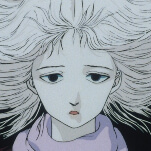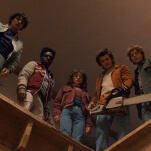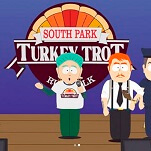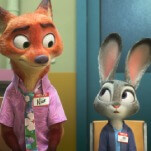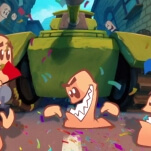Few artistic mediums do more to remind their fans of what a big, dumb, wet lump of meat the human brain can be than video games. Stow your hate-watches, TV and film fans, because they’ve got nothing on the compulsive frustrations of a hate-play. Whether we’re talking about frustrating escort missions, mindlessly repetitive clicking tasks, or challenge modes designed to kick the player full-bore in the teeth, I have done an absolutely vast number of stupid, boring, or pointless things simply because a video game told me to—with the key difference being that I was the one actually doing them, meaning there was no way to look away or check my phone while this self-imposed torture was going on. Why? Well, for one thing, I’m a dope. But also, completing tasks—even tasks you neither like nor respect—can feel kind of satisfying. I touched on these digital compulsions a few months back, when I dove into the rise of achievements for The A.V. Club‘s 2005 Week. But I’m thinking about them from a different angle now, and it’s all because of Nintendo’s new, and rather bizarre, cocktail of racing game ideas, Kirby Air Riders. Because god, but do that game’s big, beautiful grids of tasks light up something deeply unhealthy in my brain.
Some context: Air Riders is a sequel to/massively expanded remake of 2003 Game Cube game Kirby Air Ride, dropping its titular pink puffball hero/ambulatory black hole and his various friends onto gliders and cars to engage in some extremely frenetic, fitfully fun driving action. (I’ll spare you details from the game’s story—a new import for this version—except to note that it starts with the idea that cars are sentient, but agonizingly paralyzed, when no one’s driving them, and only gets weirder from there.) The idea, presumably, is to create a wackier, more simplified take on Nintendo’s Mario Kart—which kind of ignores the fact that Mario Kart itself has only gotten more frenetic and automated over the course of two decades of iterative sequels, leaving Air Ride/Riders with less of an obvious reason to exist. (But that’s me letting the Digression Bus carry me away again.)
The point of Air Riders, really, is to embrace a vibe of gaming excess. It’s constantly throwing new stuff at you: New cars, new playable characters (including the incredibly charming ability, 35 years after the release of Adventures Of Lolo 3, to play as copies of that game’s protagonists), new stickers, titles, decals, and more. And almost all of this reward glut gets delivered via the game’s gigantic, grid-based “Checklists” of achievements, one for each of its various play modes. This is an idea that the game lifts directly from Air Ride—and one that both games’ chief architect, Masahiro Sakurai, clearly likes a lot, having also shoved it into a couple of iterations of his far-more-successful Super Smash Bros. games. After every race/destruction derby/eating contest/fight against a big-ass bird, Air Riders takes you back to the grid, where you’ve inevitably cleared off a few new boxes. (“Oh wow,” I think to myself with a sense of completely unearned pride, “I guess I did land three perfect landings on that track for the first time ever. Gimme!”) The rewards themselves are practically meaningless (although you can unlock new characters and rides, in addition to tons of purely cosmetic stuff). But the pomp! The satisfaction of having a space explode open, and a big text box pop up congratulating me for successfully making four right turns during an odd-numbered race on an oval-shaped track! It’s pure dopamine porn, plain and simple.
Hyperbole aside, though, the grid is also savvy game design—as it has been every time Sakurai has busted it out to lend a little spark to one of his games. Achievements aren’t just about tickling gamer brains, after all: They’re also ways to impose an extra layer of goals onto what might otherwise be a too-unfocused gaming experience. The grid shared between the Air Ride and Smash games is clever because unlocking one spot on it also reveals the conditions for popping open the boxes adjacent to it, allowing the games to steadily reveal new layers of demands that leave players intrigued, but not overwhelmed. I have not yet, in my own Air Riders journey, reached the Sicko Point where I start combing through the available boxes to find my next thing to do, the way I used to when I was deeply stuck in on Super Smash Bros. Brawl. But I can feel the urge lurking somewhere in the back of my brain, the little whisper that says “Oh, the grid reveals a little more of a big picture every time you clear one of these suckers; don’t you want to see the full thing?” Despite its best efforts—including a “story mode” that weakly incorporates some roguelike elements into itself—Air Riders doesn’t really have enough oomph, as a game, to serve as more than a curiosity for me. That added layer of tasks and complexity, though, is likely to extend my interest in it by a few more sessions, pushing me to try every flavor of its many game modes and poke further at the depths of its massive, haphazardly packed bag of tricks. Because who doesn’t like to blow up a big grid?




